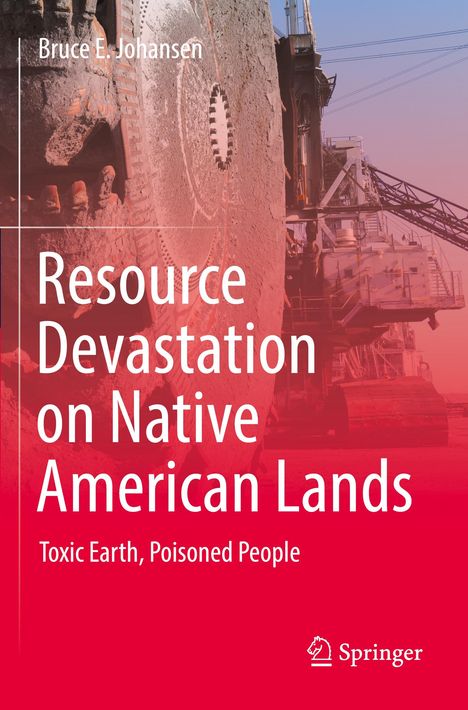Bruce E. Johansen: Resource Devastation on Native American Lands
Resource Devastation on Native American Lands
Buch
- Toxic Earth, Poisoned People
- Springer International Publishing, 02/2024
- Einband: Kartoniert / Broschiert, Paperback
- Sprache: Englisch
- ISBN-13: 9783031218989
- Artikelnummer: 11763132
- Umfang: 240 Seiten
- Nummer der Auflage: 24001
- Auflage: 1st ed. 2023
- Gewicht: 371 g
- Maße: 235 x 155 mm
- Stärke: 14 mm
- Erscheinungstermin: 10.2.2024
Achtung: Artikel ist nicht in deutscher Sprache!
Weitere Ausgaben von Resource Devastation on Native American Lands
Klappentext
This book focuses on the toxic legacy of Native North America, which is pervasive but largely invisible to most non-Native peoples. Many toxic sites are located in out-of-the-way rural areas largely forgotten by the majority of America, but which nonetheless have supplied its industries with the rudiments of manufacturing for the better part of a century before being closed and cast aside. Thousands of contaminated sites exist in the United States due to dumped, left out, or otherwise improperly managed hazardous waste. These sites include manufacturing facilities, processing plants, landfills, and mining sites. Based on the 1980 Comprehensive Environmental Response, Compensation and Liability Act (CERCLA), the US Environmental Protection Agency (EPA) cleans up these so-called Superfund sites, of which roughly 40 percent are located in Native country.The book links present-day Native American cultural and economic revival to a fundamental struggle to restore the health of both Native peoples and their homelands. It links past and present with a sense of Native Americans perceptions of nature and the sacred land. By doing so, it also provides the majority society with an example to emulate as we emerge, by necessity, from the age of fossil fuels into a sustainable energy paradigm.
This makes the book a must-read for students, scholars, and researchers of Native American studies, US politics, environmental studies, public policy, as well as policy-makers interested in a better understanding of the environmental devastation of Native land and its consequences.


